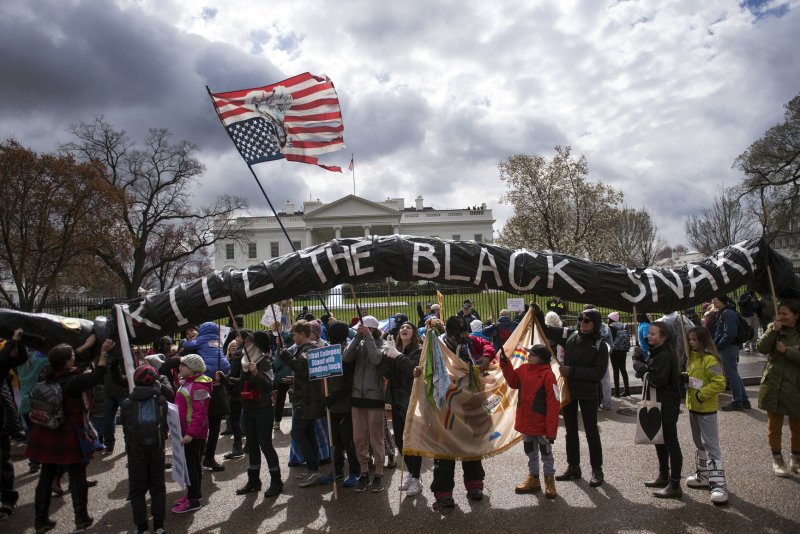1 of 12 | Members of the Standing Rock Sioux Tribe, indigos right advocates and environmental activist participate in a protest against the Dakota Access Pipeline in Washington, D.C., on Friday. Activists marched to the White House in opposition of the Trump administration's approval of the oil shale pipeline, allowing it to run through sacred native land. Photo by Kevin Dietsch/UPI |
License Photo
March 10 (UPI) -- Thousands of Native Americans and opponents of the controversial Dakota Access Pipeline on Friday continued protests in Washington, D.C., intended to rally against -- and put a stop to -- the contentious oil transport system.
Standing Rock Sioux tribe members, other advocates and a few celebrity supporters gathered in the nation's capital on Friday for a series of events, including a massive demonstration outside the White House.
A large crowd also demonstrated with a march to the headquarters for Army Corps of Engineers, the government branch that recently approved the completion of the oil pipeline in North Dakota.
An oversized "Make America Great" hat -- the iconic symbol from President
Donald Trump's campaign -- is pierced by an arrow during a protest against the Dakota Access Pipeline in front of the White House on Friday. Activists marched to the White House and the Army Corps of Engineers to oppose the Trump administration's approval of the controversial shale oil pipeline, which allows it to run through sacred native land. Photo by Kevin Dietsch/UPI
President Donald Trump has praised the Dakota pipeline, which had stalled near the end of former President Barack Obama's administration over concerns about potentially contaminated drinking water for Standing Rock Sioux.
This week's four-day "Native Nations Rise" event seeks the end of construction of the Dakota system -- and the similarly embattled Keystone XL pipeline. In addition to fears of water contamination, opponents also decry the construction's impact on sacred tribal sites and religious rights of indigenous people.
The Keystone line is intended to carry oil from Alberta, Canada, to refineries in Texas and Illinois. The 1,172-mile-long Dakota pipeline will transport synthetic shale oil underground from the Bakken fields of North Dakota, across South Dakota and Iowa, to storage tanks in Illinois.
Earlier this week, a federal judge declined to issue a temporary injunction to stop completion of the disputed final phase of the Dakota pipeline, meaning oil could begin flowing in the pipeline as soon as next week.
After taking office in January, Trump signed two executive orders that paved the way for completion of both pipelines -- part of his agenda to revitalize the domestic energy industry.
As part of the event, tribal members have also set up a number of several tepees on the National Mall near the Washington Monument.
















